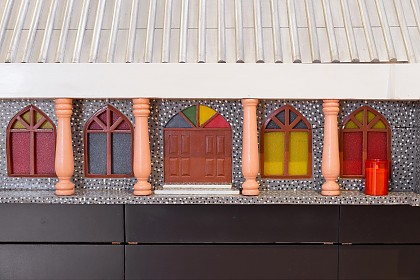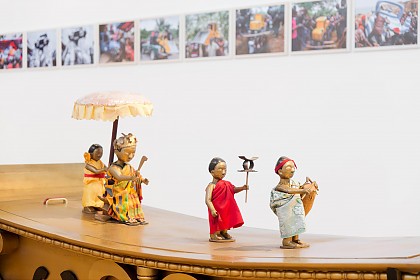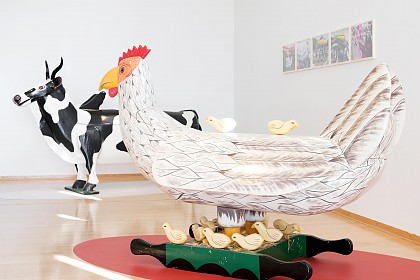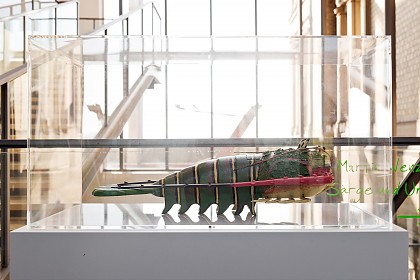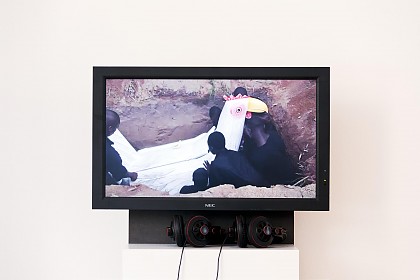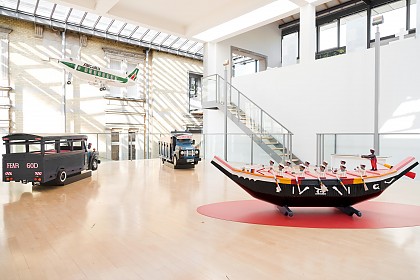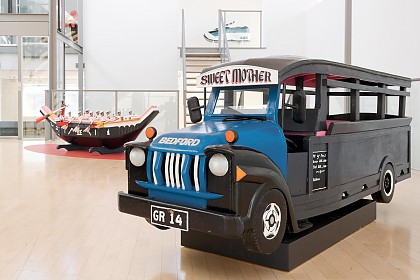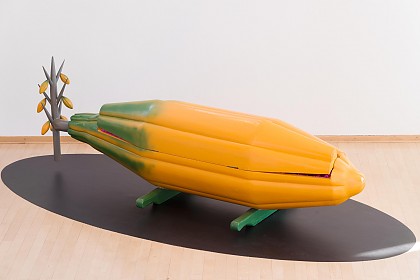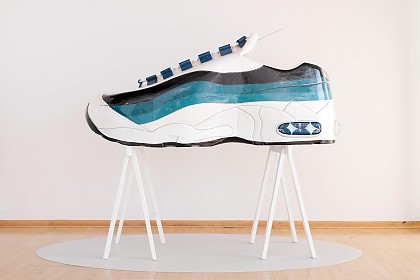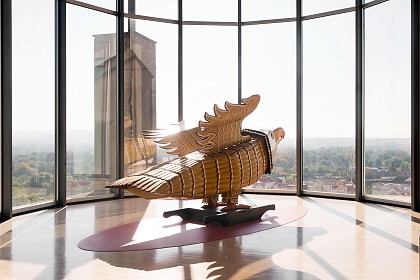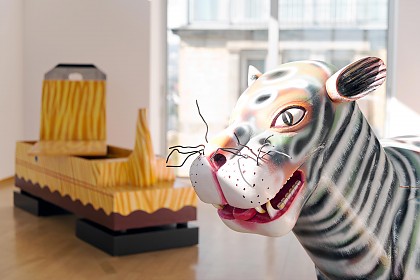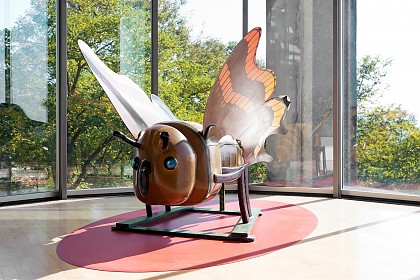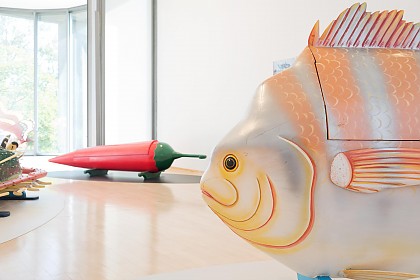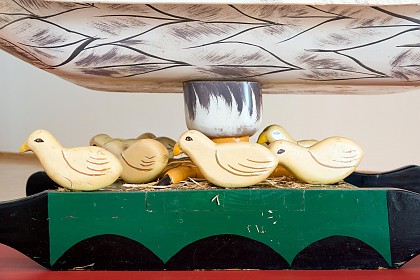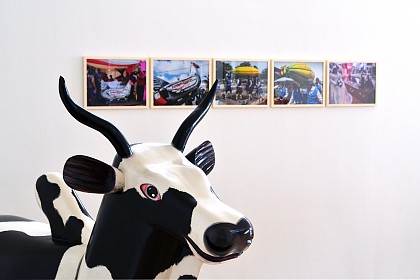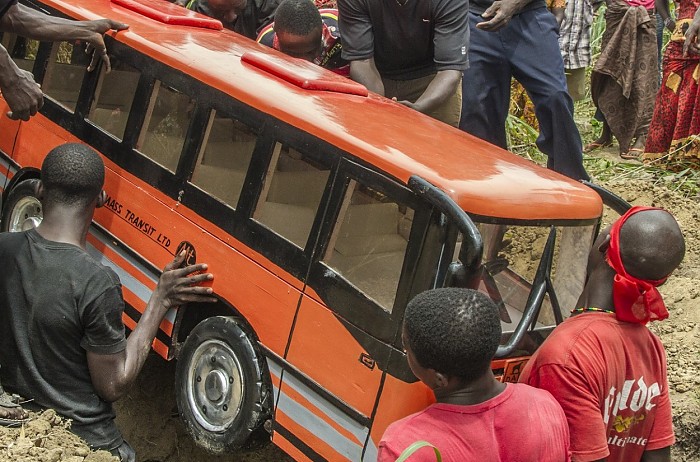

10. August – 13. October 2019
Fantastic coffins from Ghana
In the African cultures and especially in Ghana death takes a central place. This is expressed in an opulent funeral celebration, often lasting several days. Often even the coffin is impressive. Modelled on a bus, a chilli pepper, a tiger or a plane, it is a real "eye-catcher". It reflects what was important in the lives of the individuals and what made them special. At the same time it forms an important material link between the world of the living and the dead. Although many Ghanaians are Christians, their piety is also strongly imbued with their ancestor worship. This is especially the case with the Ga, a population group living mainly in the south of the country. In the Ga faith the deceased establish a connection between the living and the so-called ancestor spirits. Ancestor spirits are considered to be powerful, which is why the purpose of arranging a glorious funeral is not to disgrace them. However, it must always be emphasized that the figurative coffins cause high costs and often cause the bereaved to fall into debt.
Bus, fish, plane, onion – The coffins of the Ga and their history
The artistically designed coffins of the Ga began to establish themselves in the 1950s. However, they probably had their starting point earlier, in the 1930s. At that time palanquins in figurative form came into fashion, such as canoe, elephant or lion palanquins. Sedan chairs are important status symbols, so to speak, on which heads could be worn on important occasions. Some even had themselves buried in them. The coffin and palanquin maker Ataa Oko Addo (around 1919-2012) was an early witness to these forms of burial. In the 1940s he made not only box coffins but also figurative coffins. It is possible that these impressive sedan chairs inspired him to create this new type of coffin, and he may be considered the pioneer of the Ga's figurative coffins. However, this has not been clearly proven.
Meanwhile these coffins are more and more often demanded by Christians. However, there are differences in design: While the coffins of the Ga are based on motifs which symbolize the social status of the deceased, their ancestor worship or the family totem (such as a palanquin, an eagle, or a lion), the figurative coffins of the Christians often represent professional symbols (fish, truck, sneaker) or symbols of their "official" religion (such as a church or Bible). The coffin art of Ghana is closely connected with the names of those who created them in the workshops in the Greater Accra Region in the south of the country. However, the Western art world primarily associates names like Kane Kwei (1922-1992) and Paa Joe (*1947) with it. Looking back on the history of their creation and development, Ataa Owou (1904-1976), Cedi Anang Kwei (*1965), Paa Willy (*1955-200), Daniel Mensah (*1968), Eric Kpakpo (*1979), Eric Adjetey Anang (*1985) and Kudjoe Affutu (*1985) deserve to be honoured as important coffin artists. Since many collectors and museums outside Africa have meanwhile become aware of these special objects, more and more figurative coffins and models are being made for sale. The coffins in our collection have therefore never been used for burial.
In December 2018, 28 of these figurative coffins from the workshop of the Ghanaian coffin artist Paa Joe were donated to the Museum of Sepulchral Culture as "Collection Hermann Krause" (1944-2018) by Antje Hegge (Cologne). The impressive coffins are certainly the impressive reflection of a highly creative approach to loss. This is also an occasion to reflect on the significance of creativity, which is also a characteristic of individuality, in dealing with farewell and mourning and to explore this again and again for oneself personally.
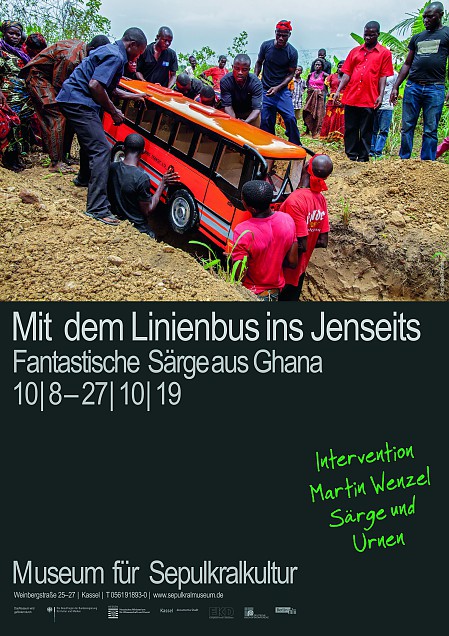
Curatorial Team
Ulrike Neurath / folklorist
Gerold Eppler M.A. / art educator
>> Exhibition brochure (PDF) (German)
Arbeitsgemeinschaft Friedhof und Denkmal e.V.
Zentralinstitut für Sepulkralkultur
Museum für Sepulkralkultur
Weinbergstraße 25–27
D-34117 Kassel | Germany
Tel. +49 (0)561 918 93-0
info@sepulkralmuseum.de



